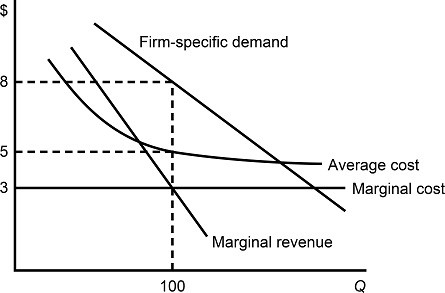The growth rate of total output equals
A. The growth rate of the labor force plus the growth rate of productivity.
B. Gross investment minus depreciation.
C. Real GDP per worker.
D. Real GDP per capita growth rate.
Answer: A
You might also like to view...
Answer the following statements true (T) or false (F)
1. There are no brand names in perfect competition. 2. Under conditions of perfect competition, no individual seller or buyer can influence price. 3. The entry and exit of firms drive economic profits to zero in the long run in a perfectly competitive industry. 4. Perfectly competitive firms are price takers. 5. Exit is blocked in perfect competition.
Which of the following types of wages is set by the labor market, assuming no interference from external sources?
a. equilibrium wage b. efficiency wage c. minimum wage d. union wage
According to age-earnings data,
A. lower-educated workers have similar earnings at age 65 as higher-educated workers. B. investments in education result in higher earnings. C. high earnings are due to motivation and innate ability, rather than education. D. there is no clear relationship between education and worker productivity.

 Figure 8.4 depicts demand and costs for a monopolistically competitive firm. If the firm's demand curve shifts to the left as more firms enter the market:
Figure 8.4 depicts demand and costs for a monopolistically competitive firm. If the firm's demand curve shifts to the left as more firms enter the market:
A. the firm's average cost will be lower at the new profit-maximizing output level. B. the firm's marginal cost will be higher at the new profit-maximizing output level. C. the firm's marginal revenue will remain the same at the new profit-maximizing output level. D. the firm's marginal cost will remain the same at the new profit-maximizing output level.